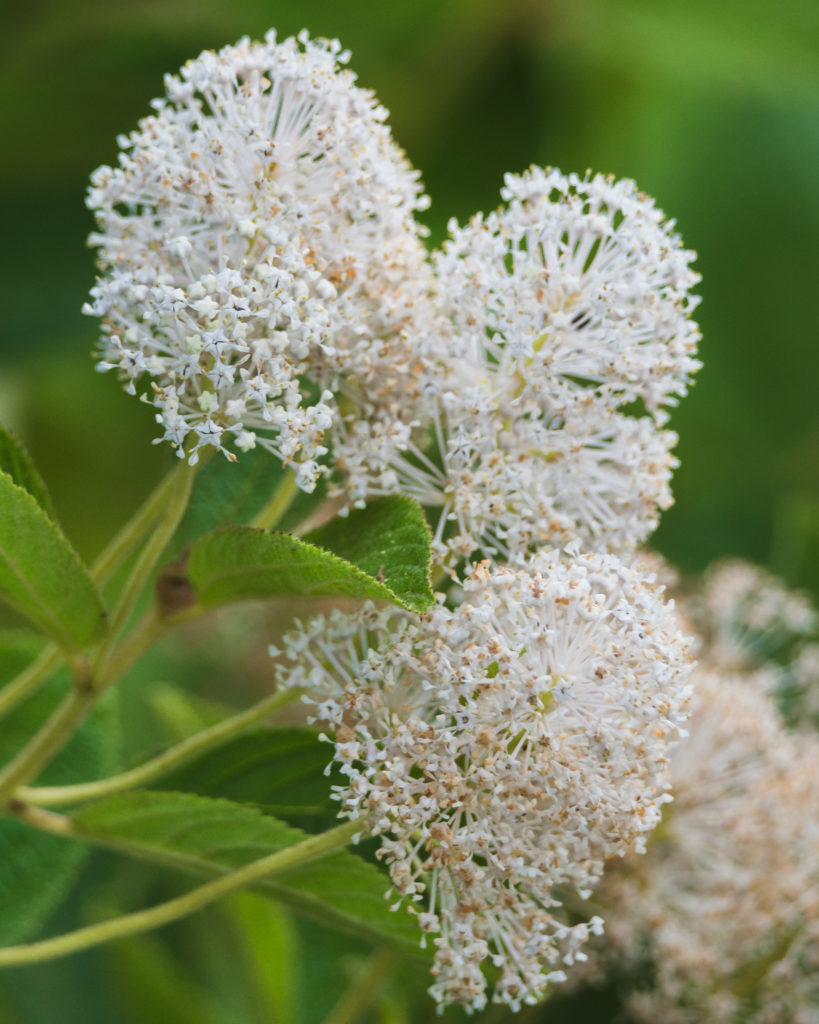Butterfly garden design is growing in popularity as a planting genre in the gardening community. Fortunately, creating a successful butterfly garden is simply about following a few key principles and choosing the right plant species.
This piece will discuss one primary function of butterfly gardening – attracting adult butterflies. Although there are other best practices to consider such as providing larval host plants, suitable habitat, a water source etc.
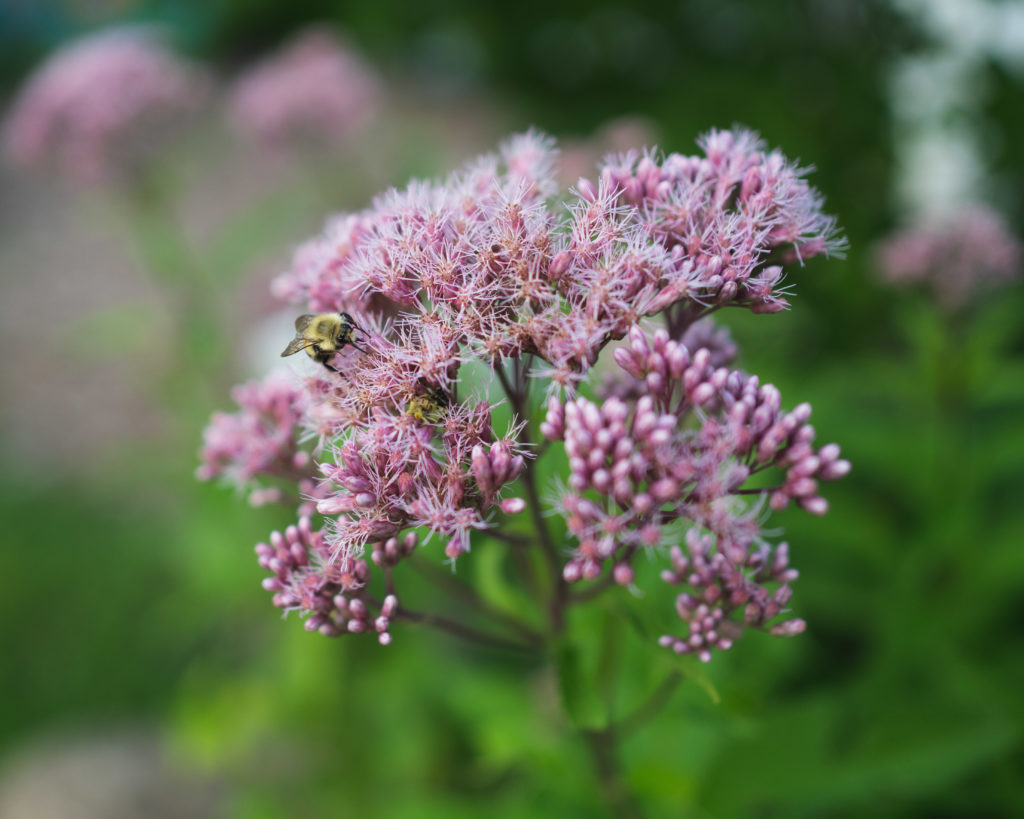
Mature butterflies seek nectar that is highly nutritious and easy to attain. Having a proboscis (essentially a straw) they will often gravitate towards plants with high concentrations of individual flowers or those with long tubular flowers. Watching a monarch butterfly on Joe-Pye weed (which displays an umbel-shaped bloom with an array of tiny flowerheads) reveals how much the proboscis does the work, feeling around and systematically maneuvering across the flower head, as the body stays relatively stationary. Butterflies have little interest in pollen, unlike bumblebees and other pollinators, so they will target flowers specifically for the nectar rewards.
Key Points
Choose an open sunny location
Butterflies require warm temperatures and bright conditions to fly and forage. Therefore selecting a space with more than 6 hours of sunlight will increase the amount of plant species available and the likelihood butterflies will stay and feed.
Aim for continuous bloom
Choosing species that bloom in different periods of the growing season will allow a garden to always have something to offer for butterflies. Generally this can be broken down into spring, summer and fall blooming plants.
Create blocks of color
A garden will be discovered by butterflies easier with groupings of individual plant species. This will better serve them by allowing them to spot the location and efficiently gather nectar by minimizing movement. Plant diversity should be tempered based upon the size and scale of the project. It’s better to have healthy groupings of a few species as opposed to a wide diversity of singular plants.
To learn additional butterfly gardening principles by purchasing

Perennials
We are big advocates for choosing only native species for a butterfly garden design. Although native plants don’t have exclusive rights to nectar that butterflies seek, they have a long-standing relationship with our local butterfly species and provide countless other ecosystem benefits. If considering cultivated species please ensure that the plant species are not known to “jump the fence” and become invasive.
Avoid using butterfly bush
Butterflybush (buddleia) is a popular choice for a butterfly garden and often recommended by those in commercial landscaping. Unfortunately, buddleia species are not native to Ontario and many varieties are known to become invasive. Although they are a striking visual plant they can become aggressive when they spread outside the garden space and are known to colonize natural areas out-competing native species. Please avoid using this non-native invasive plant in your butterfly garden design.
Blazing star Family (Liatris)
The kings of native, butterfly-attracting flowers. The blazing star family comes in various shapes and sizes but all have a common thread- butterflies love their purple blooms. The dense blazingstar (Liatris spicata) is particularly esteemed for its tall stalks populated with lavish, magenta blooms. Monarchs take a particular fancy to this species. We highly recommend including members of the blazing star family in every butterfly garden.

Coneflower Family (Echinacea)
These brilliant purple flowers are presumably seen from a distance away by butterflies. Once discovered they are often seen working in a circular motion around the flowerhead. Both the purple coneflower (echinacea purpurea) and pale purple coneflower (echinacea pallida) are hallmark species of a sunny butterfly garden. For dry sites consider using pale purple coneflower because of its deep taproot which will aid in drought tolerance once established.
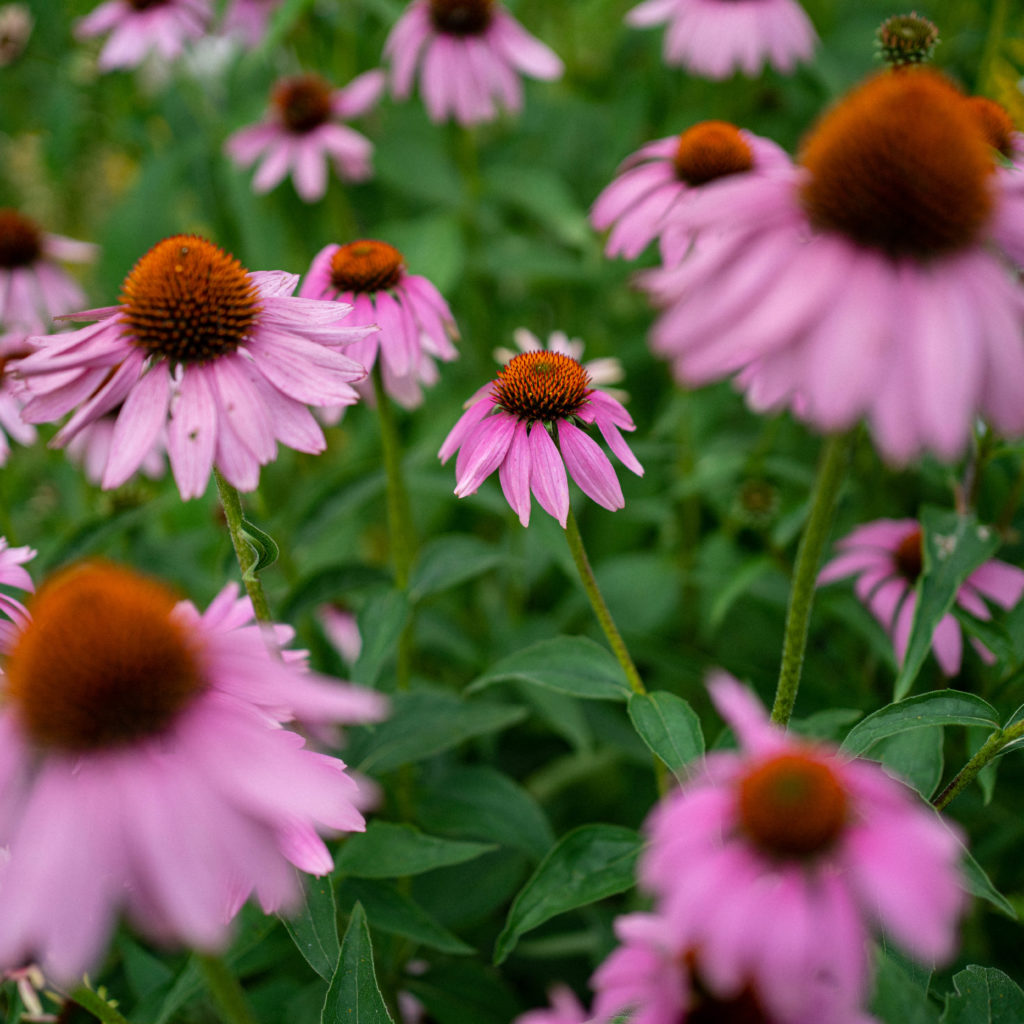
Hyssop Family (Agastache)
The yellow giant hyssop (Agastache nepetoides) and anise hyssop (Agastache foeniculum) are two natives well suited for use in a butterfly garden. Both are highly attractive to pollinators, in particular bumblebees, and bloom for an extensive period late summer. Butterflies enjoy the conical flowers as they work their way up slowly probing nectar from each blooming inflorescence.
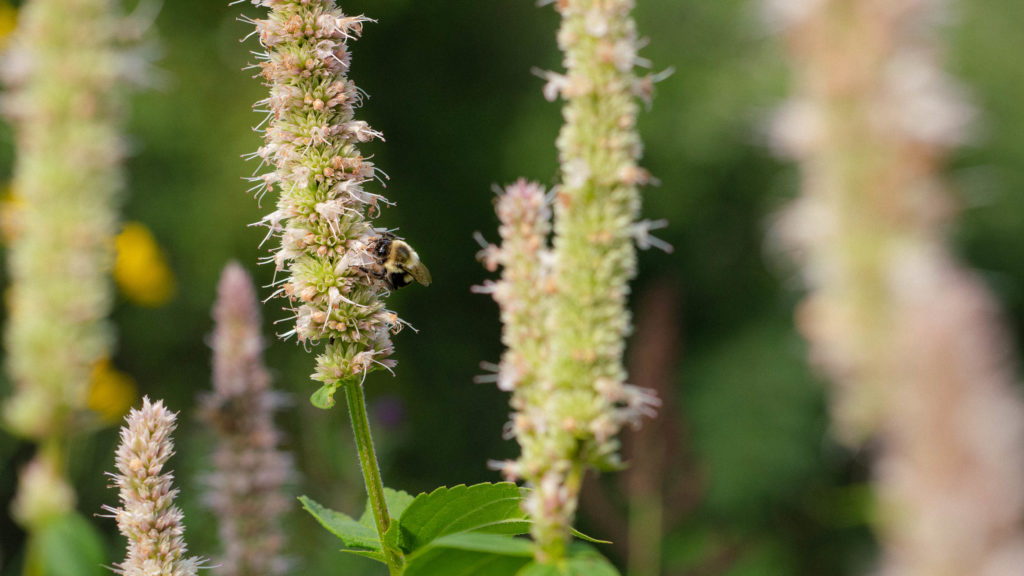
Milkweed Family (Asclepias)
The milkweed family is often talked about for it’s unique ability to host monarch butterfly caterpillars, but it’s also a wonderful nectar plant. Common milkweed (Asclepias syriaca), butterflyweed (Asclepias tuberosa), swamp milkweed (Asclepias incarnata) and whorled milkweed (Asclepias verticillata) are members of the family which are great additions to a butterfly garden. Tiger swallowtails seem particularly attracted to our common milkweed flowers.
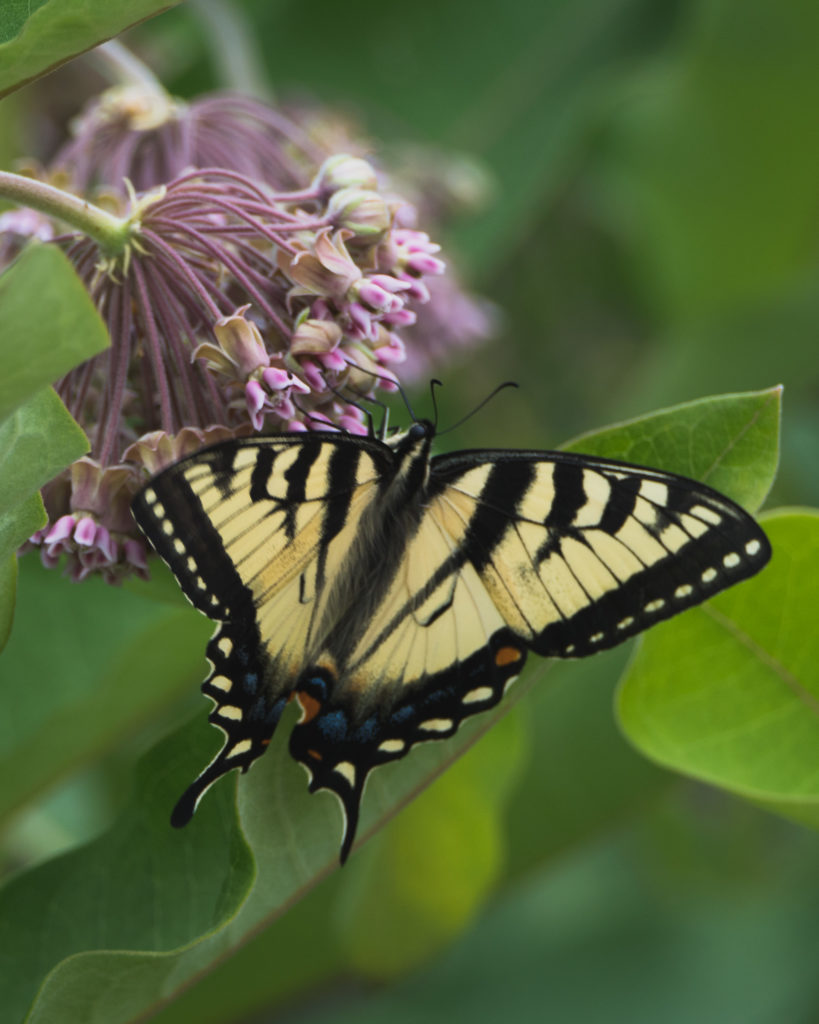
Ironweed Family (Vernonia)
Late summer is prime time for the Vernonia (Ironweed) family of species. With large panicles of nectar-rich flowers these tall perennials have a commanding presence. Monarch butterflies are seen regularly coasting about these flowers waving in the wind. Both Missouri ironweed (vernonia missurica) and tall ironweed (vernonia gigantea) will serve their late-season purpose with success.
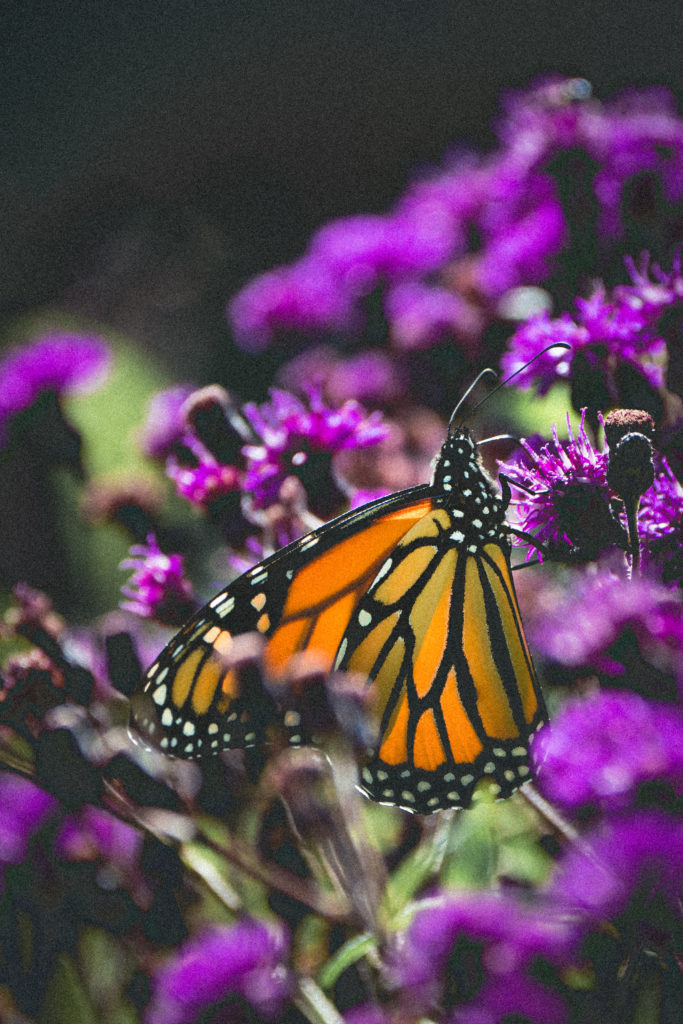
Bee Balm Family (Monarda)
The monarda family have brilliant showy blooms with pleasant coloration. The tube-like flower structure saves the nectar for long-tongued pollinators, butterflies and hummingbirds. The scarlet bee balm (Monarda didyma) is a vibrant species which hummingbirds have a keen interest in visiting. The violet, pinkish flowers of the wild bergamot (Monarda fistulosa) is also a very busy place during it’s bloom period.
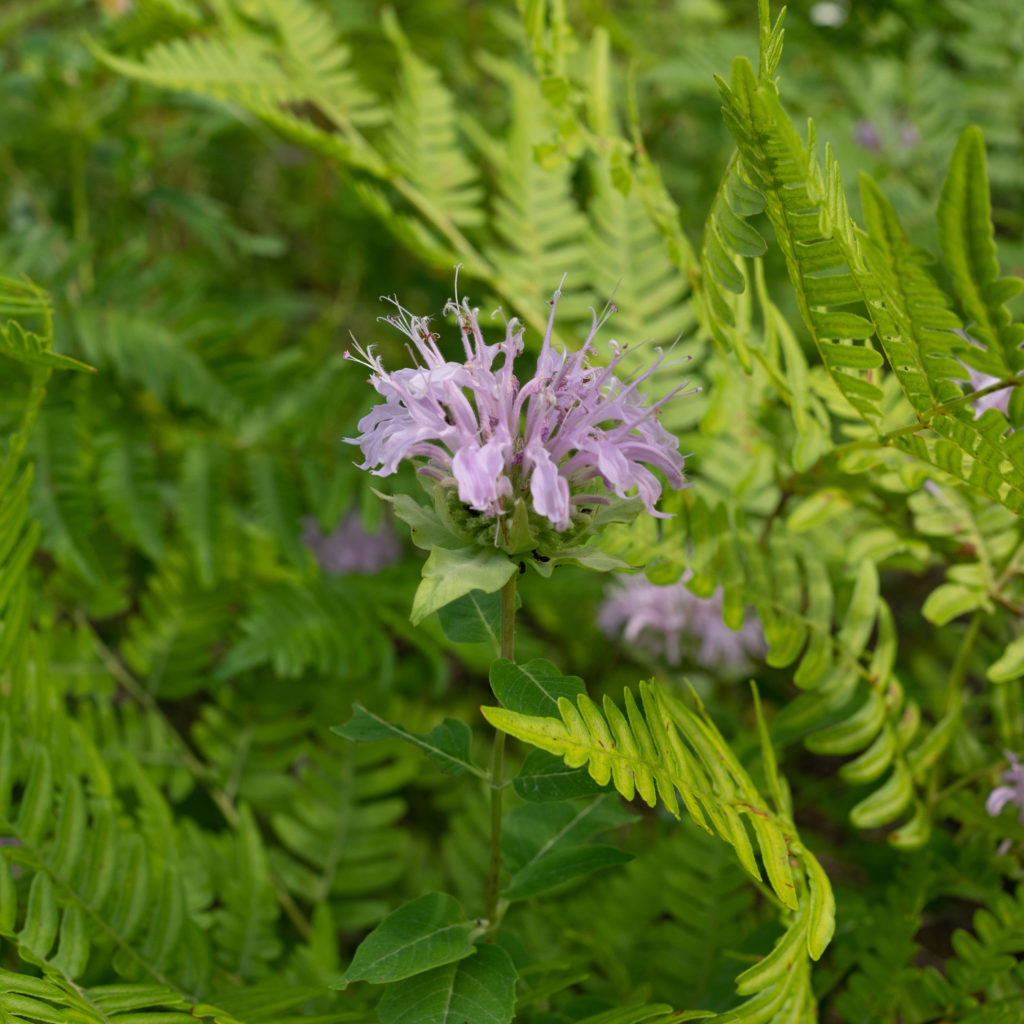
Mountain Mint Family (Pycnanthemum)
The two species of mountain mints, slender (pycanthemum tenuifolium) and Virginia (pycanthemum virginianum), produce loads and loads of long-lasting small, white flowers. As a result, this attracts almost every pollinator and the flowerheads are seen teeming with small native bees, bumblebees and butterflies. Being a vigorous species it grows with intention and makes use of all the space it’s been given.
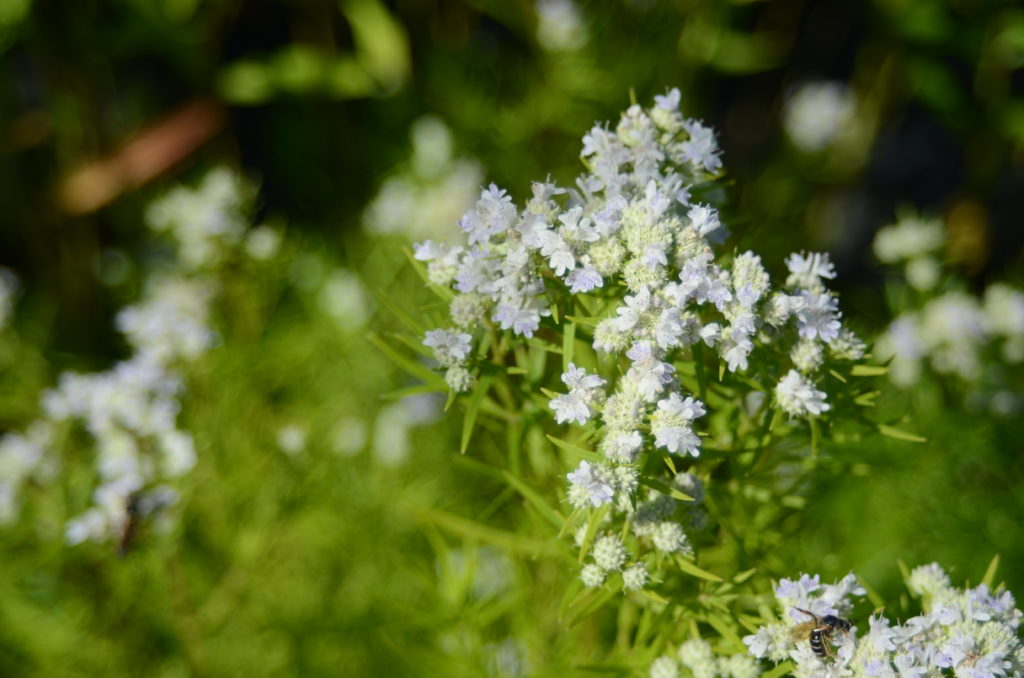
New England Aster (Symphyotrichum Novae-Angliae)
This fall blooming perennial is key source of nectar for migrating monarch butterflies. Bursting with purple flowers this large member of the aster family is adaptable to a variety of garden conditions.
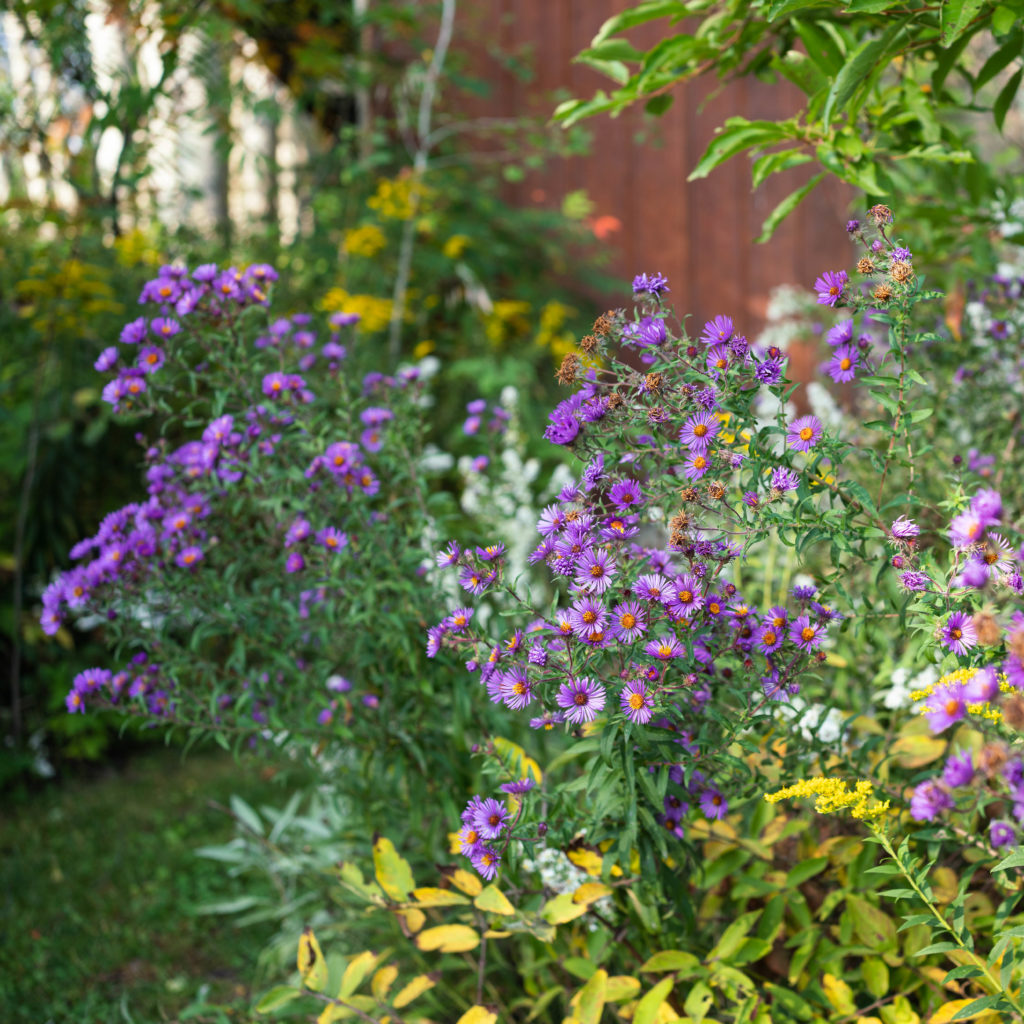
Joe-pye Weed (Eupatorium maculatum)
Despite it’s undesirable name butterflies love this native perennial. The high concentration of small flowers are perched upon tall stalks and composed as large, umbel blooms. Butterflies love this plant! It does prefer moist soil and is often seen naturally in riparian habitat.

Shrubs
Meadowsweet (Spiraea alba)
This native shrub species has conical, white blooms that are quite attractive to pollinators and butterflies. We have noticed that white admiral butterflies seem to have a keen interest in visiting the meadowsweets at the farm.
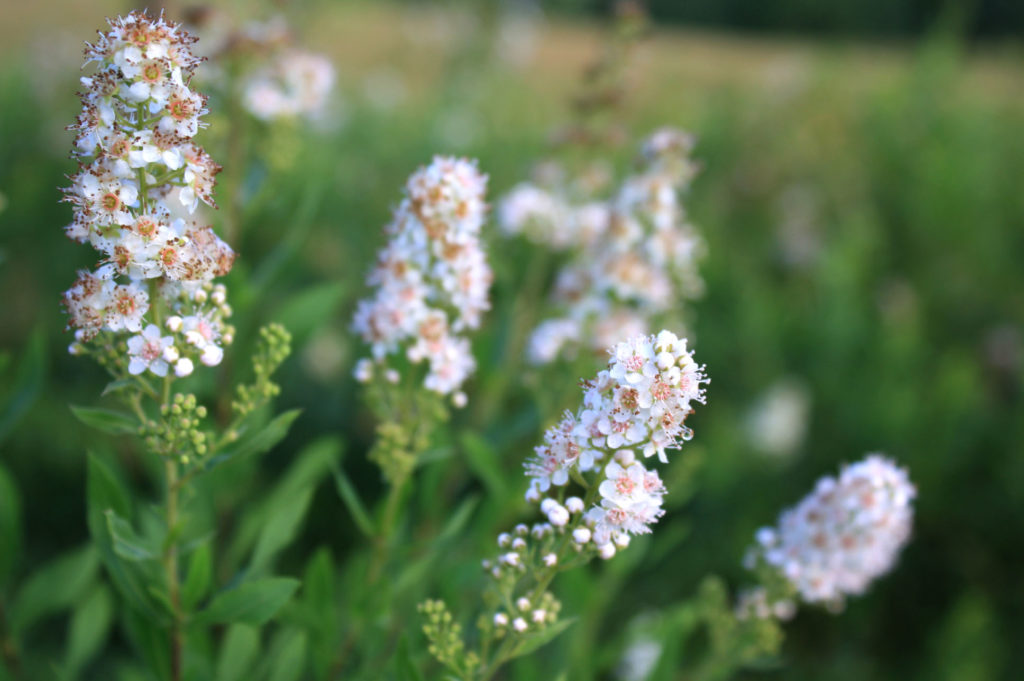
Buttonbush (Cephalanthus occidentalis)
A happy buttonbush produces an abundance of globular, white flowers that have the appearance of floating Ferrero Rocher chocolates. These fascinating blooms dangle from the ends of slender stalks amongst deep, green foliage. Because each “globe” is comprised of a plentiful amount of tiny flowers – pollinators and butterflies have a venerable feast. Swallowtails and elfins are two notable visitors at our buttonbush.
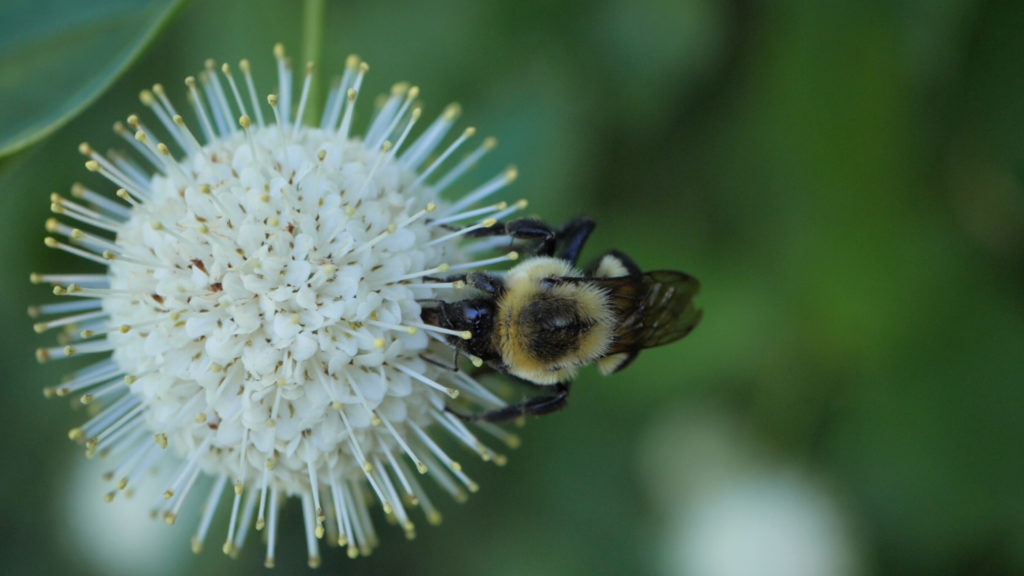
New Jersey Tea (Ceonothus americanus)
New Jersey Tea produces plumes of magnificent white flowers in early summer. Smaller butterfly species seem to gravitate towards the nectar rewards of this low-growing native shrub. It is also an important larval host plant for mottled duskywings and azure butterflies.
